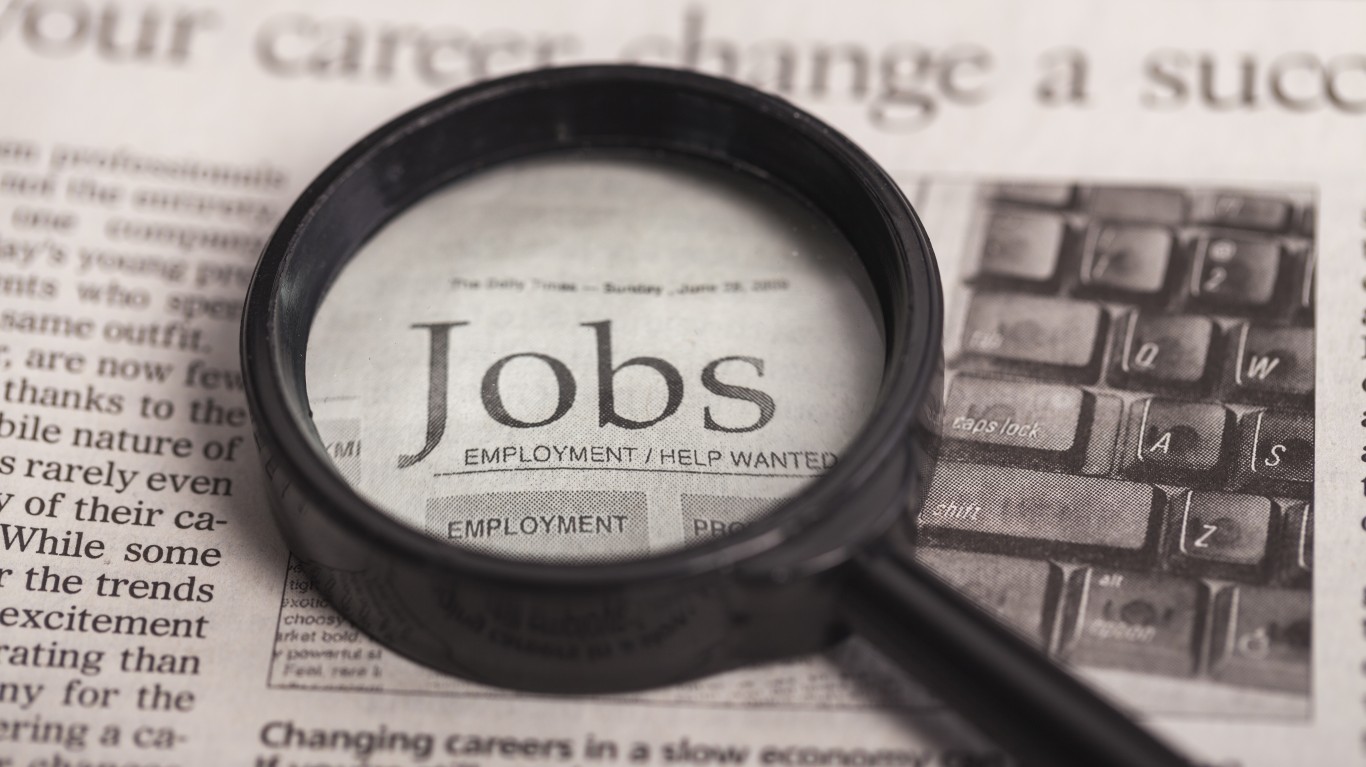
Thursday’s sell-off in the stock market may have been profit taking in the market darlings after such massive runs, but there was already a growing fear that Friday’s unemployment report was going to be weak. According to the Department of Labor, U.S. employers added 1.37 million jobs in August. The unemployment rate also sell to 8.4% for the month of August.
The jobless rate had been closer to 3.5% ahead of the pandemic, but it peaked at nearly 15% back in April as the effects of the pandemic shutdowns were so high.
The good news is that this now takes the unemployment rate solidly under 10%. The bad news is that this report still has many cracks in it and getting a full picture of the jobs market is still a bit challenging.
Friday’s report was handily better than expectations after ADP set a very tone with a much weaker payrolls growth. The consensus estimate from the Wall Street Journal were calling for the unemployment rate to be 9.8%. The consensus estimate for jobless claims was roughly 1.2 million.
The BLS data also showed that the labor force participation rate increased by 0.3% to 61.7% in August, but that is still 1.7 percentage points below its February level. Total employment in the household survey rose by 3.8 million to 147.3 million people in August.
If you have been wondering how the endless growth of Zoom and other communications services have been so strong, the BLS has an answer for that too. Some 24.3% of employed Americans teleworked because of the coronavirus pandemic in August. That number looks massive but it is actually down from a level of 26.4% in July.
According to the BLS report, the higher payrolls came from a continued resumption of economic activity and efforts to contain the pandemic. The increase in government employment was said to be mostly due to temporary hiring for the 2020 Census. Gains were also seen in the private sector in retail trade, professional and business services, leisure and hospitality, and in the education and health services sector.
One key aspect of the report is that the number of unemployed Americans fell by about 2.8 million to 13.6 million. And among the unemployed, the number of Americans on temporary layoff decreased by 3.1 million in August to 6.2 million. Still, the BLS reported that the number of permanent job losers increased by 534,000 to 3.4 million and number of unemployed reentrants to the labor force declined by 263,000 to 2.1 million in August. The number of people not in the labor force who currently want a job also declined by 747,000 to 7.0 million in August.
The BLS also showed that the number of unemployed persons who were jobless less than 5 weeks decreased by 921,000 to 2.3 million in August, while the number of persons jobless 5 to 14 weeks fell by 2.0 million to 3.1 million. The long-term unemployed, measured as those who have been jobless for 27 weeks or longer, numbered 1.6 million.
Paychecks appear to be higher in August. Average hourly earnings for all employees on private nonfarm payrolls rose by $0.11 to $29.47 in August. Average hourly earnings of private-sector production and nonsupervisory employees also rose by $0.18 to $24.81.
Another factor that has skewed the reporting is that there were 5.2 million persons who were in the labor force in August and were prevented from looking for work due to the pandemic. This is down from an even larger pool of 6.5 million in July, but that is still a very large number. The BLS also specified in the August report that the large employment fluctuations over the past several months. particularly in industries with lower-paid workers, has complicated the analysis of current trends in average hourly earnings.
Reading through BLS data has become more challenging than normal because of the data collection issues and combinations of certain reports under the COVID-19 pandemic. There are also large numbers of people who are being considered with exceptions. In many respects, the non-seasonally adjusted data are showing more of the total picture than the seasonally adjusted data.
The stock market’s reaction has been mixed after the BLS report. The S&P 500 was down almost 0.2% and the NASDAQ was down about 1.2% after the report, but the Dow Jones Industrial Average was still up over 0.4% after about 20 minutes of trading.
In 20 Years, I Haven’t Seen A Cash Back Card This Good
After two decades of reviewing financial products I haven’t seen anything like this. Credit card companies are at war, handing out free rewards and benefits to win the best customers.
A good cash back card can be worth thousands of dollars a year in free money, not to mention other perks like travel, insurance, and access to fancy lounges.
Our top pick today pays up to 5% cash back, a $200 bonus on top, and $0 annual fee. Click here to apply before they stop offering rewards this generous.
Flywheel Publishing has partnered with CardRatings for our coverage of credit card products. Flywheel Publishing and CardRatings may receive a commission from card issuers.
Thank you for reading! Have some feedback for us?
Contact the 24/7 Wall St. editorial team.


